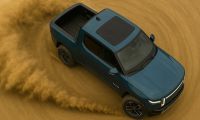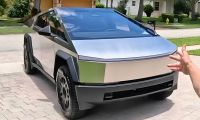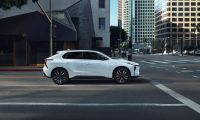Deep Freezing a Tesla
Out of Spec Reviews took his Tesla Model 3, which has a healthy battery, to a super charging station and left it near the stalls for two days to let it freeze in the frigid cold conditions. Het let his Tesla deep freeze at -9 degrees Fahrenheit.
His Model 3 was frozen, but he was still able to get it to the Super Charger. While going to the stall, the car was covered in ice and snow. Everything turned on in the car, but he didn't dare run the windshield wipers. There was also little power output/input available. The regenerative braking limit was also on.
A battery pack that is frozen like this is not going to take a charge very fast until it starts to warm up. He was able to get the super charging cable to his Tesla, but the cable was frozen and wouldn't latch into the charging port. He went to find another unit to plug into. He was able to plug another one in just fine.
When entering his vehicle to look at the charging, he had heated seats on. He started with getting 5 kW in his car, which is about the charge speed I get at a level 2 slow charger - 6 kW is what most level 2 chargers have been giving my Tesla.
You may also be interested in:
- Tesla Model S Plaid review after 20,000 miles.
- What will happen if Tesla lowers prices?
- Elon Musk will only make a phone as a last resort.
Charging at a Super Charger
He waited to see how long it would take for the battery to get warm and the charge speed to speed up. He got messages saying that charging would increase in speed once the battery was warm.
For a short while, no kW were being added to the battery. A cold battery doesn't want to get charged. When navigating to a Super Charger to charge, Tesla will automatically pre warm the battery in order to make it easier to charge.
After sitting in another vehicle, the charge of the Tesla went up 1%. After 30 minutes, no Energy had been added to the battery pack. Then Energy started to be added. This is definitely one weakness of an EV, the effect of cold weather on the battery of the car.
It went from 0 to about 23 kW, then 26 kW. There was a snowflake icon showing that the battery was very cold. Once the battery starts to get warm, it will begin slowly adding kW. I've had the same experience with this at CSS fast chargers.
After an hour and 15 minutes, the vehicle got to 70% state of charge. The vehicle then got to about 52 kW. The temperature at this time was about -16 degrees Fahrenheit.
Eventually the car got to 90% of range charged and it took about an hour and 45 minutes. When he went to drive it after charging, he had full regenerative braking. The warm motors and battery were ready to use.
Have you driven your Tesla in cold weather? Have you tried using a Super Charger in the cold?
Leave your comments below, share the article with friends and tweet it out to your followers.
Jeremy Johnson is a Tesla investor and supporter. He first invested in Tesla in 2017 after years of following Elon Musk and admiring his work ethic and intelligence. Since then, he's become a Tesla bull, covering anything about Tesla he can find, while also dabbling in other electric vehicle companies. Jeremy covers Tesla developments at Torque News. You can follow him on Twitter or LinkedIn to stay in touch and follow his Tesla news coverage on Torque News.











